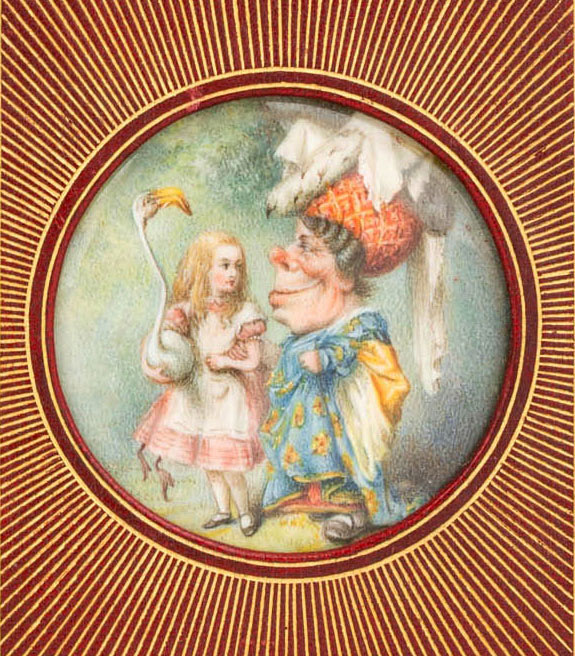
Alice's Adventures in Wonderland, London 1868.
An especially wonderful 'Cosway' binding (circa 1910-1913), with miniatures by Miss C.B. Currie. The scenes depicted are Alice with flamingo & croquet mallet and the Duchess on the front cover, and Alice and the Dodo on the rear. 1/
An especially wonderful 'Cosway' binding (circa 1910-1913), with miniatures by Miss C.B. Currie. The scenes depicted are Alice with flamingo & croquet mallet and the Duchess on the front cover, and Alice and the Dodo on the rear. 1/

In the early 1900s, John Harrison Stonehouse, the managing director of @Sotherans, began to commission these distinctive fine bindings by Rivière & Son, featuring inset miniatures on ivory by his in-house miniaturist, Miss Currie. 2/ 





Many of her excellent miniatures imitated the style of the earlier painter Richard Cosway, hence the term Cosway binding. Over nearly 40 years she produced miniatures for over 900 bindings. 3/ 

Miss Currie's artistry in producing these miniature paintings was unequalled at the time. Other binderies soon copied the style and featured miniatures by other artists - they are referred to as 'Cosway-style' bindings, but they are both more common and far less desirable. 4/ 



• • •
Missing some Tweet in this thread? You can try to
force a refresh



































